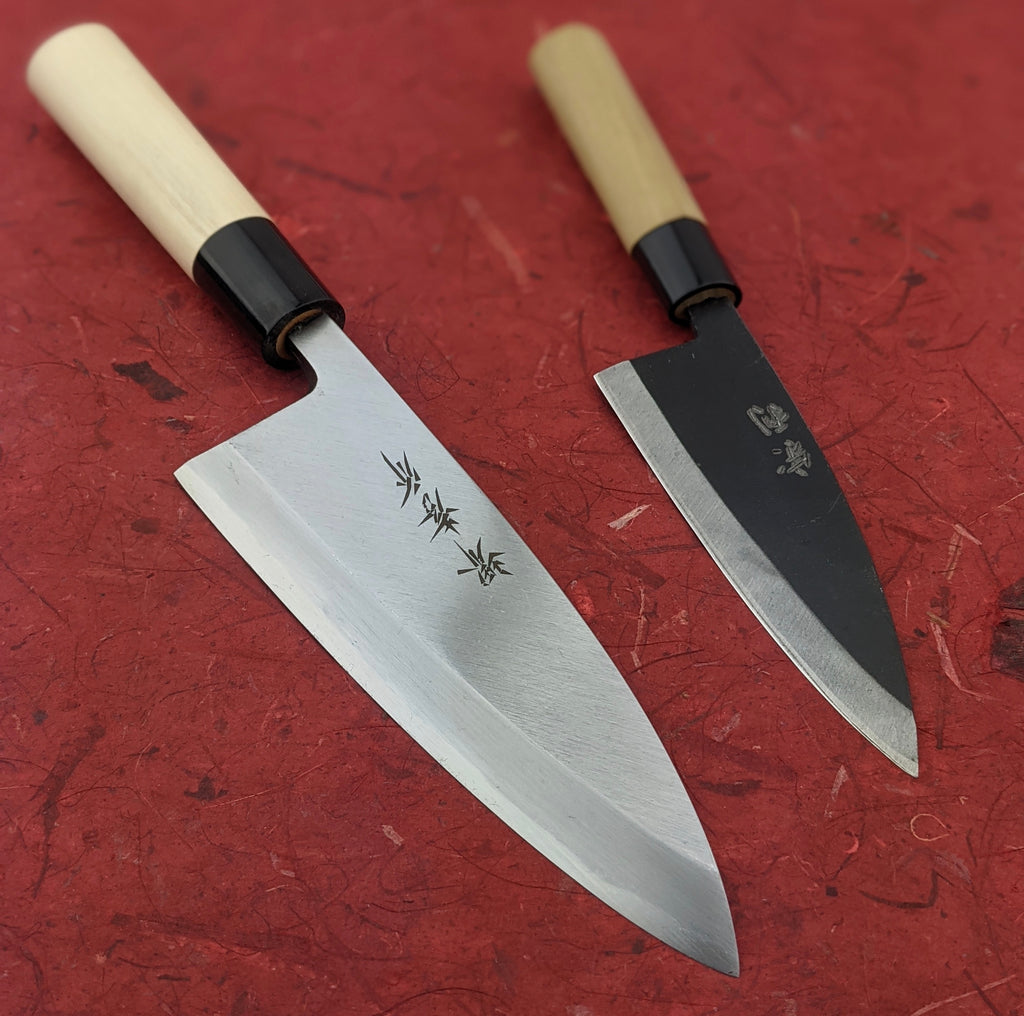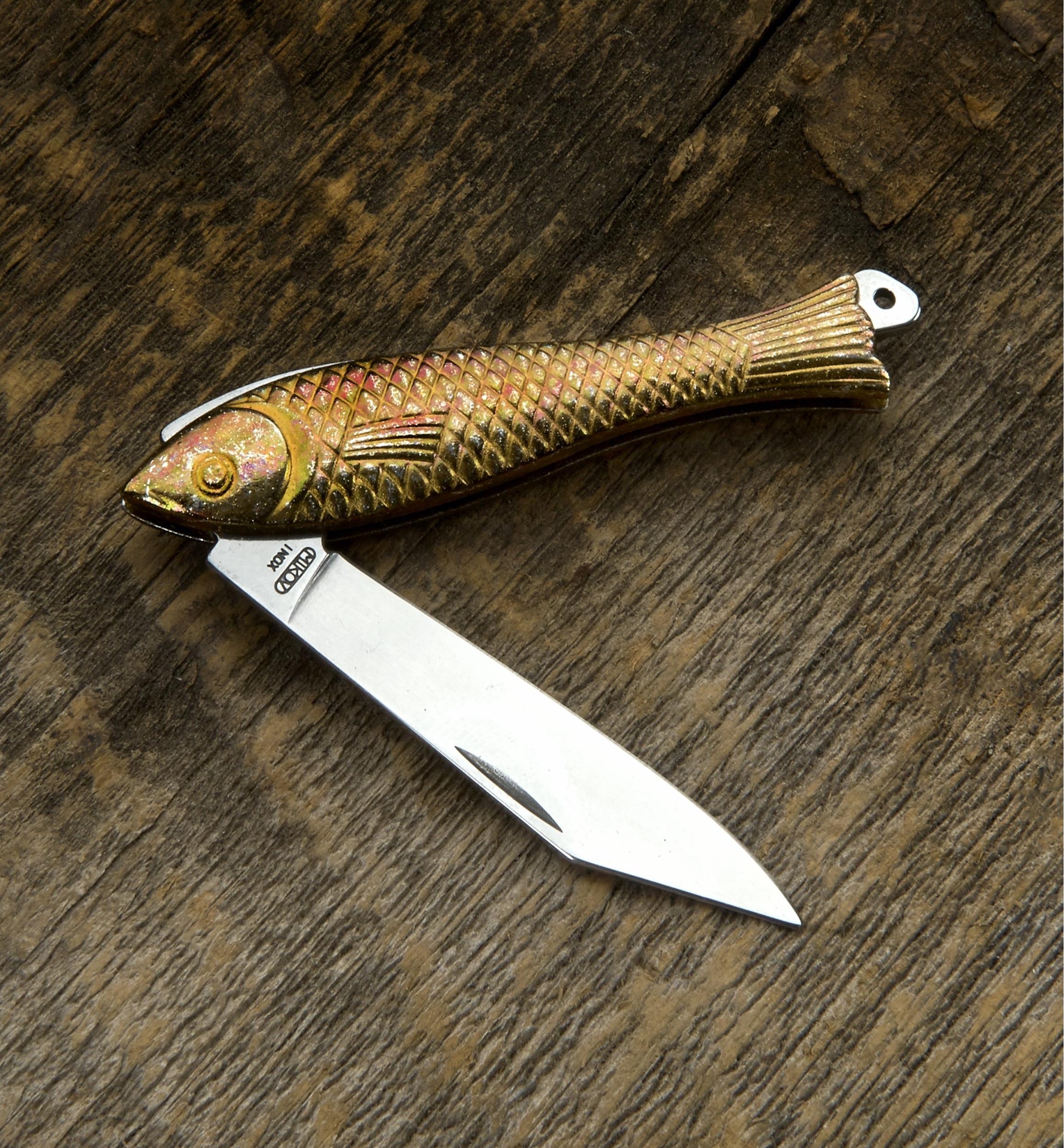The history and evolution of the fish knife
Wiki Article
Discover the Important Functions to Search For in a Top-Quality Fish Knife
When choosing a fish knife, several essential attributes require attention. The blade product considerably impacts longevity and intensity, while adaptability plays an important role in precision. Furthermore, the manage layout impacts convenience throughout expanded usage. Edge retention and safety attributes are likewise important for sensible usage. Understanding these elements will assist consumers toward making an enlightened option, yet the subtleties of their significance might not be immediately clear.Blade Product and Building And Construction
The effectiveness of a fish knife mostly pivots on its blade material and building and construction - fish knife. High-quality fish blades usually include blades made from stainless-steel, high-carbon steel, or a mix of both. Stainless steel is favored for its rust resistance and reduced maintenance, making it excellent for freshwater and deep sea atmospheres. High-carbon steel, while susceptible to rusting, uses remarkable intensity and side retention, appealing to those who focus on cutting performanceThe construction of the blade also plays a crucial duty in its effectiveness. Full-tang blades, which prolong the whole size of the take care of, provide boosted stamina and balance. In comparison, partial-tang blades might endanger longevity. Additionally, the density of the blade must be taken into consideration, as thinner blades enable extra precise cuts, vital for fragile fish filleting. Inevitably, a sound blade, utilizing the appropriate products, is fundamental for attaining the most effective outcomes when preparing fish.
Blade Flexibility and Length
Blade flexibility and length are essential aspects that substantially influence the efficiency of a fish knife. A flexible blade allows for exact cuts and the ability to navigate around bones and skin, making it essential for filleting fish successfully. The right amount of versatility can boost control, enabling the individual to attain clean, smooth cuts with very little initiative.In regards to length, fish knives usually vary from 6 to 9 inches. A longer blade is advantageous for larger fish, supplying the reach required for reliable filleting. Conversely, a shorter blade provides ability to move, making it ideal for smaller sized fish or intricate tasks.
Eventually, the option of adaptability and size should align with the particular fishing requirements and choices of the individual. A healthy mix of these features makes certain optimum performance, enhancing the overall fish preparation experience.
Handle Design and Comfort
A well-designed deal with is necessary for making certain convenience and control when making use of a fish knife. The handle should fit firmly in the hand, enabling a company grasp throughout detailed jobs such as filleting or skinning fish. Products like rubber, wood, or composite supply various degrees of convenience and grip, affecting the individual's experience.Ergonomic functions are additionally crucial; shapes that follow the all-natural form of the hand can minimize tiredness throughout prolonged use. In addition, the manage's structure plays a considerable role in protecting against slippage, specifically when collaborating with wet hands.
Weight circulation is one more factor that adds to the general balance of the knife, boosting maneuverability. A comfy manage style not only enhances efficiency but additionally promotes safety and security, as a safe hold decreases the threat of accidents (fish knife). Ultimately, a thoughtful take care of style can dramatically discover this info here raise the effectiveness of a fish knife in culinary applications
Edge Retention and Developing
While using a fish knife, keeping a sharp side is important for accomplishing clean cuts and exact filleting. A high quality fish knife must exhibit superb edge retention, enabling it to remain sharp with numerous uses. This characteristic is often figured out by the type of steel utilized in the blade; high-carbon stainless steel is often chosen due to its equilibrium of hardness and deterioration resistance.
Security Attributes and Sheath Options
When selecting a fish knife, countless security attributes and sheath choices are important considerations. An ergonomic and protected take care of reduces the risk of slips during usage, enhancing user safety. Distinctive holds and finger guards further protect against accidents, permitting far better control while filleting fish.In addition, a blunt tip can minimize the risk of puncture injuries, making it a much safer choice for beginner customers.
Sheath choices also play an important duty in safety. A well-designed sheath safeguards the blade, avoiding view it now unexpected cuts when the knife is kept or carried. Sheaths made from resilient materials, such as nylon or difficult plastic, offer included defense versus environmental elements.
Some sheaths come with belt clips or loopholes, ensuring the knife is conveniently obtainable while continuing to be safe. Inevitably, focusing on safety attributes and sheath alternatives adds considerably to the general functionality and user experience of a fish knife.
Frequently Asked Concerns
What Is the Finest Brand for Fish Knives?
The most effective brand for fish blades typically varies by choice, but renowned names like Wüsthof, Victorinox, and Avoid are regularly recommended for their longevity, sharpness, and craftsmanship, making them top options among cooking enthusiasts and experts alike.Can Fish Blades Be Made Use Of for Other Kinds Of Fish?
Fish blades can undoubtedly be used for various other kinds of fish. Their style and intensity make them functional enough for various fish species, enhancing the overall experience of filleting and preparing various kinds of seafood.
Just how Do I Clean and Preserve My Fish Knife?
To preserve a fish and clean up knife, rinse it with warm water after use, delicately scrub with moderate soap, dry thoroughly, and shop in a protective sheath to stop damage and corrosion. Routine sharpening is crucial.Are There Fish Knives Especially for Left-Handed Users?
Yes, there are fish knives developed especially for left-handed customers. These knives feature reversed blade angles and ergonomic deals with, making certain convenience and effectiveness for left-handed people while filleting and preparing fish. Quality choices are available from numerous suppliers.What Is the Cost Variety for Quality Fish Knives?
Quality fish blades generally range from $20 to $150, relying on products, brand reputation, and craftsmanship. Higher-end alternatives might feature premium ergonomics and customized styles, while budget-friendly selections still offer adequate efficiency for laid-back customers.The performance of a fish knife greatly hinges on its blade material and building and construction. High-grade fish knives usually feature blades made from stainless steel, high-carbon steel, or a mix of both. Blade adaptability and length are important elements that substantially affect the efficiency of a fish knife. Fish blades can indeed be utilized for other kinds of fish. These blades include reversed blade angles and ergonomic deals with, ensuring comfort and efficiency for left-handed individuals while filleting and preparing fish.
Report this wiki page